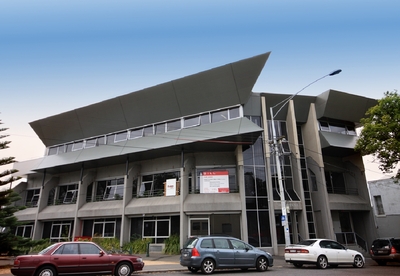Gas-powered, air-conditioning solution to cut energy usage and costs
Tuesday, 26 June, 2012
FMSA, a Melbourne-based company offering comprehensive architectural, interior design and professional construction management services, has reduced its energy usage and costs while improving the efficiency of its building. The company achieved this through an environmental retrofit of its office building in North Melbourne, which included installation of three 85 kW Yanmar gas-powered, air-conditioning systems. The systems are distributed in Australia by integrated energy company Origin Energy. FMSA’s building has three office floors, each approximately 400 square metres, plus a basement car park.
The project incorporated several energy-saving initiatives, such as an environmentally efficient building management system (BMS), in addition to the Yanmar air-conditioning system. The BMS shuts down the air-conditioning system when the windows are open. “The choice of the gas-fired system meant a 50% reduction in greenhouse gas emissions ... while also creating a counter-cyclical effect on peak demand,” said Michael Fooks, FMSA Director.
The company previously used electric air conditioning, so there were no power-constraint issues in upgrading to the Yanmar gas-powered variable refrigerant flow (VRF) solution. Preliminary calculations, such as energy use comparisons and carbon emissions, were undertaken by Umow Lai, a sustainability and engineering services consultancy.
The installation of gas-powered, air-conditioning units was a major contributor to improving the environmental efficiency of the office building, said Fooks. While no formal NABERS or Green Star rating has been targeted, 5 star modelling has been implemented throughout the building retrofit. The primary reasons for implementing gas-powered air conditioning, said Fooks, were sustainability factors and improving energy efficiency. “It is worth giving serious consideration to gas-fired climate control, as opposed to more conventional electric systems. We are certainly pleased with the installers and the result.”

FMSA worked with Greater Pacific Engineering on a design and construct basis. The project was completed with the assistance of the Green Building Fund, which is an Australian Government initiative that aims to reduce the impact of Australia’s built environment on carbon emissions by cutting operational energy usage, focusing on retrofitting existing commercial office buildings.
Accessing the Green Building Fund did not require the project to have a formal NABERS or Green Star rating performed. FMSA was required to model a green building design and show energy cost savings through implementing environmental efficiencies that reduced energy use. Prior to the retrofit, FMSA’s building was assessed and awarded the equivalent of a conventional 2 stars.
The gas-driven VRF systems are available in sizes ranging from 14 to 85 kW condensers, with some models available in 3-pipe (heat recovery) configuration. These reverse-cycle air-conditioning systems use a gas engine to drive the compressor rather than an electric motor, according to Origin Energy.
The electrical load from condensers is reduced by around 90% and they don’t require three-phase power. A Yanmar 85 kW condenser has a running current of only 8 amps, single phase. A key advantage of these gas-powered models, according to Origin Energy, is their quiet operation as they operate at 62 dBA. While the cooling performance of the gas model is the same as an equivalent-sized electric model, it offers superior heating performance in frosty weather by using heat from the engine to significantly reduce the de-icing cycles often needed with electric models. There is no loss in heating performance down to -10°C. The systems come in a range of sizes to suit anything from a small group of offices up to a 14-storey building.
Tackling energy insecurity in remote communities
Researchers from Flinders and Macquarie Universities have presented the benefits of community-led...
Paper-thin LEDs that are kinder to the eye
A new, experimental LED is nearly as thin as paper and emits a warm, sun-like glow.
How clear windows can harvest energy
Researchers have created a colourless solar concentrator that can be directly coated onto...



